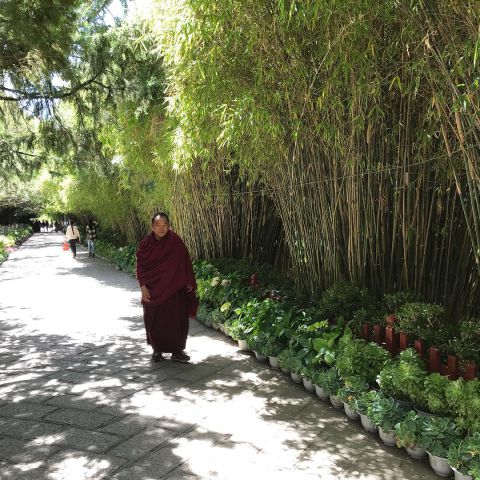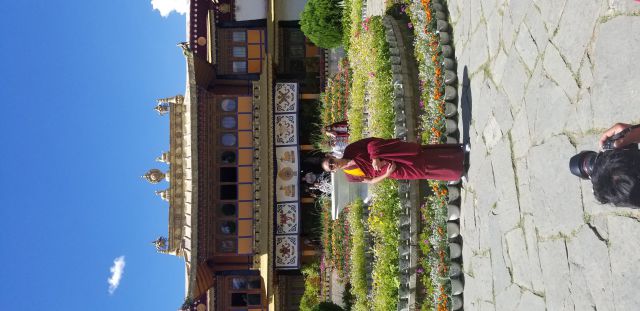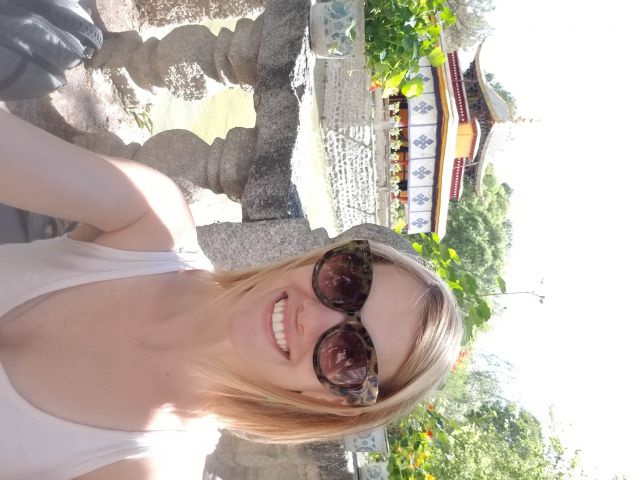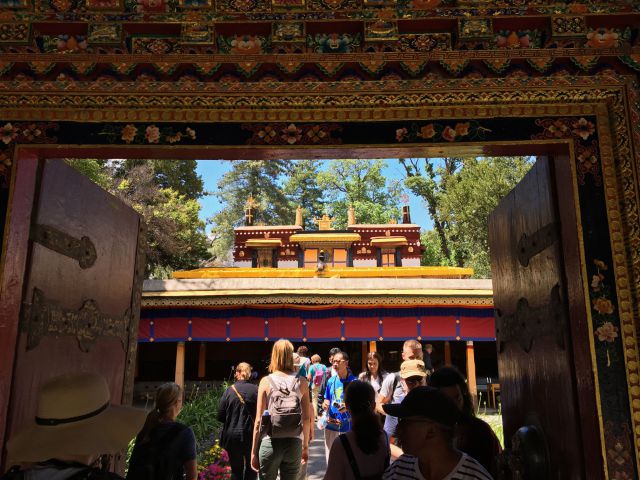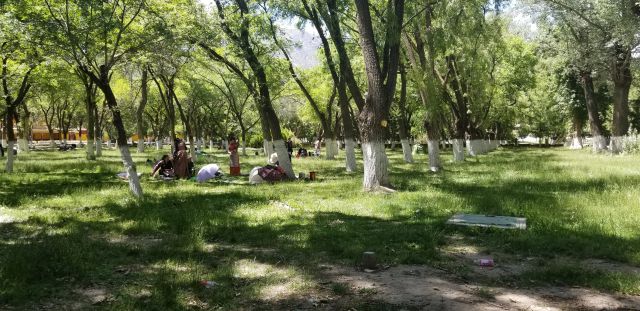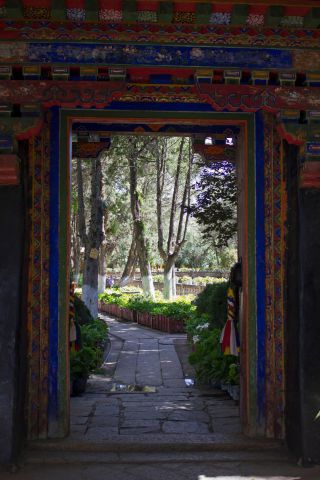Just on the other side of Lhasa past the Potola Palace is the summer residence of the Dalai Lama, Norbulingka. Imagine being a young boy, forced to move away from home and live in an old, run down palace surrounded by older men whose only form of entertainment seemed to be lecturing you on history and religion. For months at a time, this was the reality for the 14th Dalai Lama. He spent much of his days at Potola palace looking forward to the warmer weather, when he would be moving to his summer residence: Norbulingka. This word literally means “jewel park” in Tibetan – you can imagine how it earned such a nickname. Leaving behind the Potola Palace, the Dalai Lama would relocate to this beautiful park on the western edge of Lhasa. As a young Dalai Lama in training, the summer palace offered welcome distractions to the course of study he was used to pursuing at Potola. Norbulingka offered gardens of roses, petunias, marigolds, herbs, and bamboo, along with wildlife like peacocks and ducks. The procession of the Dalai Lama from his time in the Potola to his summer months in Norbulingka became a grand procession attended by Tibetans as a highlight of the year until the 14th Dalai Lama was forced into exile. It is sometimes referred to as the world’s most well-preserved ancient garden, or the world’s highest oxygen bar.
It was from Norbulingka that the 14th Dalai Lama escaped into exile in 1959, dressed as a Tibetan soldier. Once the Chinese military descended upon the palace grounds, they took care to destroy many of the relics that had existed within the buildings and grounds since the 7th Dalai Lama began spending summers there and initiated its construction in 1755. Many Tibetans protested at the palace in 1959 in outrage, but little was prevented until 2003, when much of the grounds and buildings were rebuilt and restored by the Chinese government and opened to the public for tours. You can tour the remains of the palace built between 1954 and 1956 by the current Dalai Lama and view his former residence. This consists of a mediation chamber, bedroom, and bathroom. Most of this reflects traditional Buddhist images, but there are some surprises: western style indoor plumbing, a Soviet radio, and the former location of a movie theater built by the Dalai Lama with help from the German climber, Henreich Herrer. The palace also contains an assembly hall and audience chamber where the Dalai Lama would address heads of state. The audience chamber features the history of Tibet in mural form – notice the imagery of bodhisattvas and a monkey in a cave – this symbolizes the beginnings of the Tibetan people – along with the depiction of the first field in Tibet, a representation of agriculture. At the back of the assembly hall, tours take you into the Dalai Lama’s mother’s suites – you might even see her bathroom sink overflowing with one-mao note offerings. Outside, you can tour the artificial lake commissioned by the 8th Dalai Lama. This was most often used as a retreat by the 13th Dalai Lama who built a library in the pavilion to enjoy a calm reading nook near the duck pond. Next to the new summer palace, the Kelsang Palace still stands. This was the summer palace built by the 13th Dalai Lama. It is smaller, and is no longer open to the public. In many ways, the grounds and palace at Norbulingka are intended to bring your attention to nature and the beauty of the earth, whereas Potola palace brings to mind the achievements of manmade architecture. This dichotomy reflects the dual role of the Dalai Lama as a spiritual and political leader of the Tibetan people.
Also on the grounds of the summer palace is a zoo. In nearly every book, website, and trip review I read, this was referred to as the “awful zoo.” Avoid at all costs - unless you’re in the mood to view depressed animals in littered, small cages. While this palace has been known for its gardens – sometimes being called the world’s highest preserved ancient garden, or the world’s highest oxygen bar – many of the recent reviews indicate the gardens have not been well maintained over the years.
Though this was not taking place while we are in Tibet, the summer months also bring the Sho Dun festival to the grounds of Norbulingka. This festival marks the end of Tibetan monks’ traditional 100 day summer retreat. Norbulingka hosts a traditional Tibetan opera – considered a UNESCO symbol of intangible heritage - and surrounding grounds are also host to horsemanship demonstrations and yak racing. In 2001, the entire grounds and palace at Norbulingka was added to the UNESCO world heritage site list as an extension of the site at Potola Palace.
Visiting the actual Norbulingka was truly indescribable. The grounds were beautiful, and it happened to be the 14th Dalai Lama's 83rd birthday. While no one could express this out loud, we noticed a considerable amount of Tibetans enjoying a picnic on the grounds - something our Tibetan tour guide, MingMa, pointed out might be due to the 'special day' no one could mention. Inside the 14th Dalai Lama's personal palace, we witnessed a land lose in time. With artifacts from various western countries such as an Indian and Soviet radio, a European painting, a British clock along with 1950s-era western furniture, it seemed like just yesterday the Dalai Lama had gotten up and walked away from this place without a trace of packing or intention. Our Nepalese tour guide, BK, pointed out that he had an audience with the Dalai Lama once (color me jealous!!!) and the Dalai Lama asked about the condition of his beloved summer palace. When BK described what is on display, the Dalai Lama chuckled, sighed, and told him that wasn't how he had left it. I suppose our experience has been drastically changed from the original conditions in 1959.
I plan to use our photos and experience at Norbulingka in conjunction with our visit to the Potola to illustrate to my students the dichotomy of the political and spiritual responsibilities and powers of the Dalai Lamas that was reinstated with the 7th Dalai Lama. This unification of church and state in Tibet could be compared to other leaders with similar autonomy, such as Henry VIII, Byzantine emporers, or Mansa Musa and contrasted with Enlightenment ideals of the separation of church and state in the 18th century.
Study Tour
